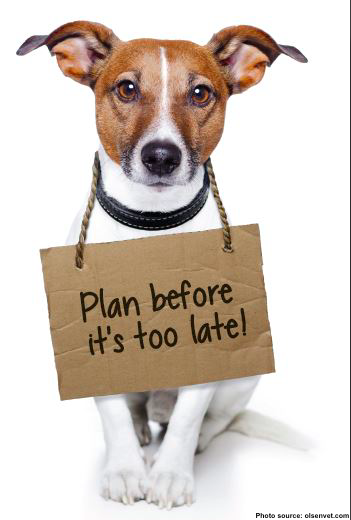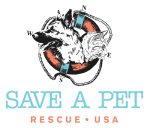Pet Disaster Kit
 When disaster strikes, being ready to face an emergency is the best way to keep your whole family safe. Because your pets are vulnerable in times of emergencies and can’t fend for themselves, they count on your for their safety so it is important to be prepared should an emergency hit.
When disaster strikes, being ready to face an emergency is the best way to keep your whole family safe. Because your pets are vulnerable in times of emergencies and can’t fend for themselves, they count on your for their safety so it is important to be prepared should an emergency hit.
Below are items to include in a pet disaster kit so that your entire family can weather a natural disaster safely.
1. Water. Obtaining fresh water becomes a top priority when faced with an emergency. Don’t forget to pick up bottled water for your pet when stocking up. A weeks’ worth of water for each family member, including your pet, is a safe bet.
2. Food. Canned, wet food is best, as it keeps better and your pet will be less thirsty. (Don’t forget can opener!) But if dry is what your pet prefers, make sure to have at least couple weeks’ worth on hand, as it may be difficult to get from the store until supplies are restocked.
3. Food and water bowls. It is a good idea to keep a spare set in in the disaster kit in the event of an evacuation and normal bowls are accidently left behind.
4. Medications. For pets that require medications, speak with your veterinarian ahead of time to secure an emergency supply of needed medications, that you may not have access to if your community is hit with severe weather. Make sure to watch for expiration dates and rotate meds out.
5. Leashes and/or Pet Carriers: In the event of severe weather, it is best to use leashes and/or carriers to restrain your pets and better keep them safe. Your pet may panic and try to break loose to find a place to hide. Many pets become fatally trapped or injured because of this. In addition, the aftermath of a natural disaster usually results in downed power lines, fallen debris and contaminated groundwater. Restraining your pet will help keep them from running out into unsafe, and possibly deadly conditions.
6. Cat litter / pan. Something that is necessary, but easily overlooked when packing to evacuate or even during last minute purchases. If it is in the kit, this is one necessity you don’t have to regret forgetting in the rush of everything.
7. Proof of ownership. In the event your pet gets separated from you, you will want to have proof of ownership to provide to shelters, rescues or even individuals that may have your pet. Or in the event you board your pet due to evacuation to a shelter that doesn’t allow animals. A recent photo with your pet is vital, together with all of your ownership papers. Keep these in a sealed, airtight container to prevent these important documents from getting damaged.
8. Proof of vaccinations. If your family has to evacuate and relocate to a shelter, that due to capacity or safety issues, you may have to board your pet. Some animal clinics and boarding facilities will offer shelter to pets, but require your animal have up-to-date vaccinations. If you need to take your pet to an emergency animal shelter, taking a copy of their vaccination record with you will help ensure they get a spot.
9. First Aid Kit. Put together an emergency medical kit for your pets should they become injured. Include items such as gauze to bandage an injury, hydrogen peroxide to disinfect a wound, and milk of magnesia to absorb poison should accidental ingestion occur.
10. Creature Comforts. Because your pet may be confined to a small space for an undetermined amount of time, try to include a pet bed, extra litter, clean blankets or towels and toys in your pet emergency kit. Like you, your pets will be nervous and frightened. Soothing them any way you can, will make your pets more likely to stay calm and relaxed.
REMEMBER. NEVER LEAVE YOUR PETS BEHIND IF YOU EVACUATE.





